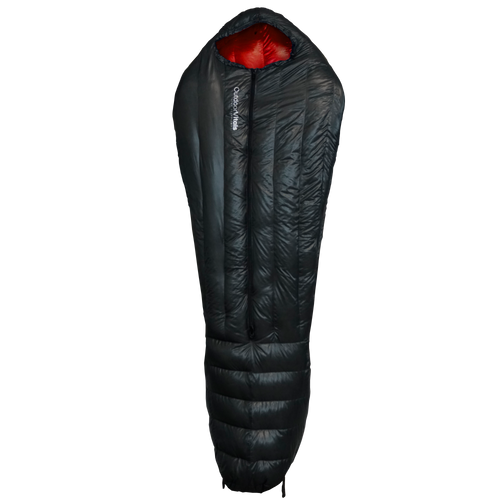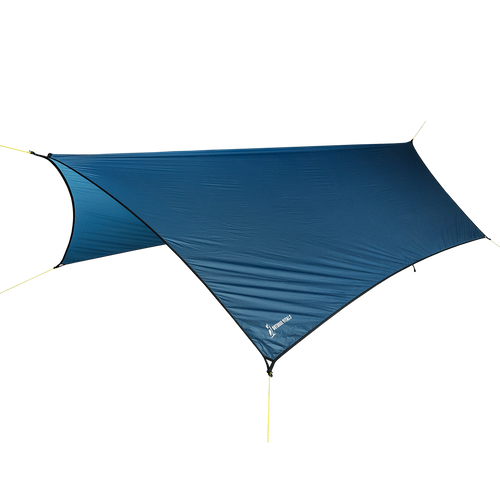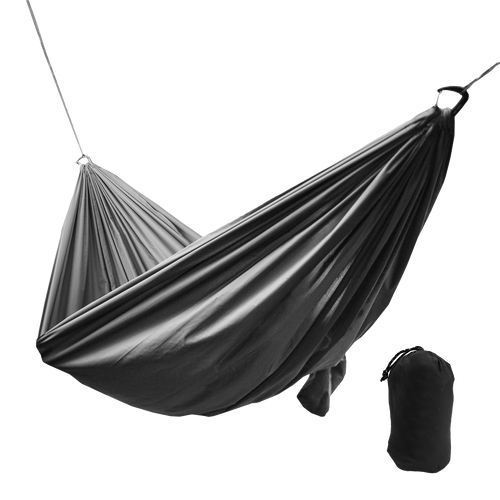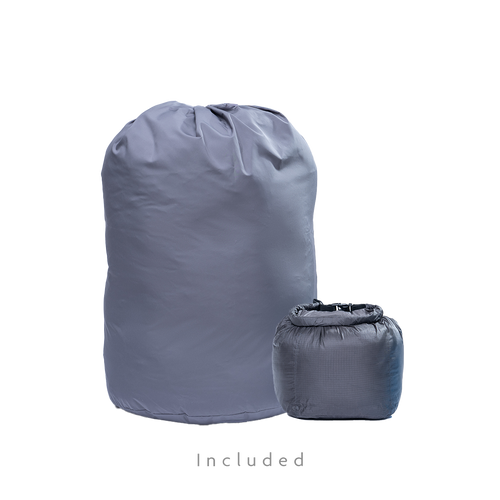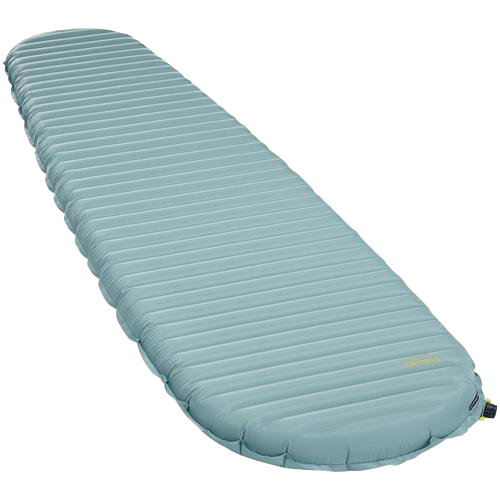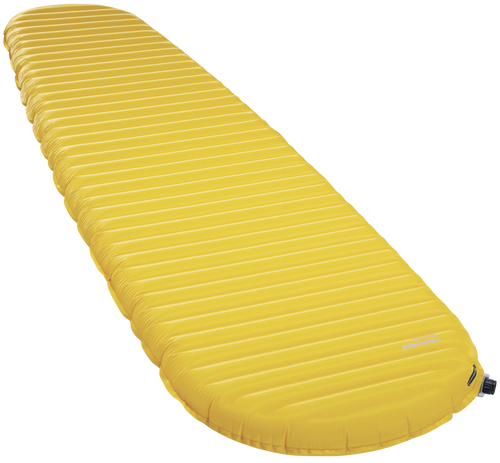Tips For Winter Camping and Backpacking
Ice. Snow. Wind. Temperatures below freezing. Those are just some of the things you face during winter backpacking. However, as harsh as all of that sounds, winter camping is a beautiful and rewarding adventure well worth the effort, particularly if you can do it right. Today we’ll cover a few tips that will help set you in the right direction to stay warm, safe, and have fun!
One of the perks of being an outdoor company is that we often go on company backpacking trips during the work week! A few of our team members took off for a quick overnight trip to summit a peak in the snow. Little did they know what was waiting for them on the mountain!
The Story
At first things seemed to be going according to plan. Tayson, Dave, and Darren trudged through snow as the made their way towards the peak on a steady uphill climb. Conditions seemed normal and they were working up a sweat. But after a couple of hours, they could see the skies darkening and what looked like a storm front on the horizon. There was wind, and it seemed that the ominous clouds were quickly getting closer.
Almost on cue, a winter storm broke out on the mountain. Strong winds, heavy snowfall, and dropping temperatures battered the Outdoor Vitals team. Everyone had brought one of our Outdoor Vitals Dominion 1 person tents, and they were forced to set up in a horseshoe formation on the mountainside to help block some of the wind and snow.
Tayson had his tent set up, blew up his insulated pad, and had his sleeping bag arranged and ready to go. Unfortunately, when he bedded down for the night, he realized that his feet were higher than his head.
This wasn’t a huge problem, and he could have just flipped his sleeping bag around. But because of the tapered shape of the tent, how his gear was already situated, and how warm he was already starting to feel inside his sleeping bag, Tayson chose not to do anything about his lay.
That was a mistake.
Because his feet were just slightly higher than his head, he was still able to sleep and feel fairly comfortable. But there was just enough elevation difference to make it so not enough blood was circulating in the feet. This resulted in cold feet all night long.
This mistake was not fatal, but definitely resulted in a lack of comfort and quality sleep. This was not due to poor gear, but because of positioning and tent placement.
While setting up camp in the winter storm, Darren, Dave, and Tayson were concerned about snow blowing up underneath their tent flies. So they packed snow around the bottoms of their tents so they were completely sealed off from the wind, hoping that the small vents on the vestibule of the tents would be enough ventilation for the night.

With temperatures dropping down into the teens, this was definitely not the case. Throughout the night condensation formed inside the tents. Darren had brought a top quilt, but had forgotten to bring a beanie or balaklava. Rather than his head being out in the cold, he just tucked everything inside the top quilt. This was even less ventilation for his breathing, and condensation developed inside his quilt. Luckily he had enough gear and layers to stay warm despite the moisture.
On the hike up the mountain, Dave just had normal boots on. He also brought NEO’s, or New England Overshoes, which are designed to go over your shoes and keep them from getting wet. NEO’s don’t really insulate, but help you stay dry. Additionally he brought down booties with a little bit of a sole on them.
His plan was to use the NEO’s with the down booties kind of as camp shoes to keep his feet warm after getting to camp. The NEO and down booty combination worked pretty well for him, but he found that in the morning, his wet boots had frozen. He opted to hike out in his booties and NEO’s, which was a little uncomfortable.
Through all of these issues, there were a few tips that came in handy that we want to make sure you know for your own winter trips.
The Tips
Circulation
Making sure you have good blood circulation is HUGE in winter camping, particularly for keeping your feet warm. If you want to stay warm and sleep comfortably, make sure you have good circulation. This means be careful in how you set up your sleep system, pay attention to if your feet are above your head or not, and make sure your boots/clothing aren’t too tight.
Condensation
Many people are aware of the importance of avoiding condensation while camping or backpacking, but this is especially important during the winter. Moisture inside your tent or sleeping bag means cold, whether that moisture freezes or not. You’ll want to do all you can to stay as dry as you can.
Sleeping Warm
If the temperatures are below about 60 degrees F, you’ll want to have something underneath you to keep you warm. This is especially critical for winter camping. You’ll want to make sure you have an insulated pad with a low enough rating for the temperatures you’ll be in.
With an estimated R value of 4, the Outdoor Vitals insulated pads used by Tayson, Dave, and Darren were having their limits pushed in the 15 degree F weather. The long wide size in particular is not as warm as the regular size since there is more air space inside. For most conditions, these pads are plenty warm.
If your pad isn't warm enough, take any extra clothing that you aren’t sleeping with, and put it underneath your pad. This will create an extra barrier between you and the snow and ice beneath your tent. Another option is to bring an extra closed cell foam pad to stick beneath your inflatable pad. While foam pads are much less comfortable, they typically do very well at insulating. Dave brought one on the trip, and also used it while setting up camp to keep certain gear out of the snow and to kneel on while cooking.
Another tip is to heat up water and put it in the bottom of your sleeping bag in a Nalgene bottle. This keeps your feet/body warm inside your sleeping bag, and then you don’t have to deal with frozen water in the morning. The water will still be warm when you wake up in the morning.
If you are wearing any cotton clothing like a T-shirt that you hiked in, you may want to remove it because that sweat is not going to dry out, and the moisture will keep you cold. Tayson had on an Outdoor Vitals cotton T-shirt, got really sweaty on the climb, and was uncomfortably chilly for the first little while after going to bed. He realized he had his sweaty shirt still on, and almost immediately after taking it off and replacing the jacket he was sleeping in he felt warmer. The saying, “Cotton kills,” is real. Using base-layers made out of merino wool can help prevent this problem.
Footwear
You will want insulated boots. Dave didn’t have any so he brought a few different pairs of footwear. None of them performed quite as well as a good pair of insulated boots. A few years back, Tayson had a similar experience and had gotten frostbite. While that didn’t happen to Dave, he could have had a more comfortable experience.
If your boots do end up getting wet, here’s a little tip to help: use hot water in a Nalgene bottle inside your boots. This will help warm them up if they are frozen, and make them a little more comfortable to put on. You can also keep a Nalgene bottle in them overnight and tuck them under you sleeping bag so they don’t freeze in the first place. But the best option is to have waterproof or water resistant insulated boots in the first place that don’t get wet.
LoftTek Insulation
One tip you really need to know about is on sleeping bag insulation. Down is known to have a high weight to warmth ratio, and is very popular. However, if it gets wet, it’s basically useless. This can be a problem in winter camping situations where there is a lot of snow and possibility of condensation. Outdoor Vitals has been working with a new insulation called LoftTek, which is a loose fill synthetic that is lightweight and compresses a lot like down. But unlike down, it insulates when completely wet! Using a LoftTek sleeping bag on a winter camping trip ensures that you stay warm, even if you have problems with moisture.
The Conclusion
These are just a few tips that will be helpful to follow on a winter backpacking or camping trip. As long as you stay dry, warm, and safe, you'll have a great time and make some incredible memories! Tayson, Dave, and Darren made it back to the office the next day with some awesome stories to tell and some new things they'd learned.
If you have any other tips to add, we'd love to hear them! Just email support@outdoorvitals.com and share your thoughts.
1 comment
The most interesting think to me is that the Dominion 1 tent worked well in winter conditions of wind and snow. Do you recommend it for winter conditions? It would be great news for through hikers and those of us who want to try winter camping. Has the tent pole system and rain fly been tested under a wet snow load? Can we assume the same for Dominion 2.5 tent? I like the bigger tent especially when weather is bad. More room to hunker down yet get to move around and 2 vestibules are great.
The Outdoor Gear Review has an episode on a conversion cover that acts like a mid-layer between the inner screened part of a 3-season tent and the outer fly to make a 4 season tent. A very clever conversion. Please look into this idea. All the Dominion owners could have 4 season tents with such an addition! There may need to be some clever ventilation features needed but I think you should make one!




